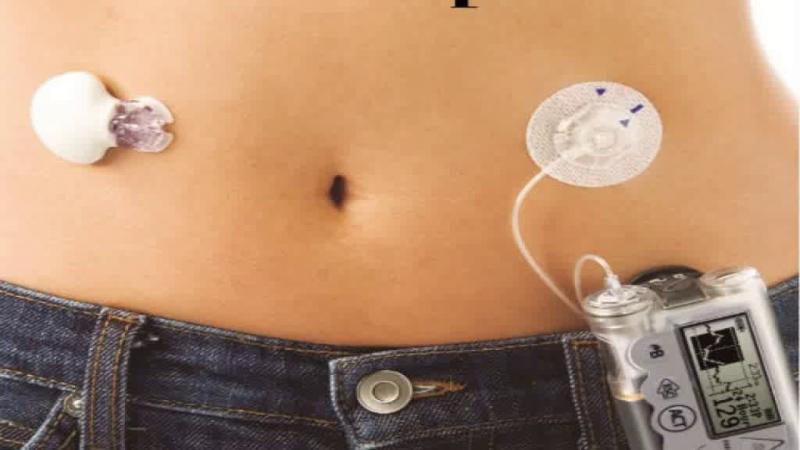The management of diabetes has evolved considerably with the introduction of innovative devices designed to provide more convenient and effective insulin delivery. Among these, tubeless insulin pumps have emerged as a groundbreaking solution, offering users enhanced mobility and discretion. Unlike traditional insulin pumps tethered by tubes, tubeless insulin pumps are compact and wearable directly on the skin, simplifying diabetes management while improving the quality of life for patients. This article explores the key features, benefits, market dynamics, and evolving trends in the tubeless insulin pump landscape.
How Tubeless Insulin Pumps Improve Diabetes Management
Tubeless Insulin Pump operate without the need for any tubing, delivering insulin through a small, wearable pod adhered directly on the body. This design reduces the risk of line tangling, leaks, and accidental disconnections, which are common concerns with tube-based pumps. The compact nature of these devices facilitates seamless integration into daily life, enabling users to engage in physical activities, sleep, and dress comfortably without the hindrance of dangling tubes.
In terms of functionality, these pumps typically offer precise insulin dosing controlled by a separate wireless device or smartphone app, enhancing user control and flexibility. The discreet design also addresses privacy concerns, empowering users to manage their condition without drawing unwanted attention. Furthermore, many models incorporate advanced algorithms to calculate basal rates and bolus doses, aligning insulin delivery closely with the patient’s changing physiological requirements.
Key Features Driving Adoption of Tubeless Insulin Pumps
Several technological attributes are fueling the growing acceptance of tubeless insulin pumps among people requiring insulin therapy. First, ease of use is significantly heightened, thanks to simplified programming and user-friendly interfaces. Users can easily set their basal and bolus rates, monitor insulin delivery, and receive alerts for low reservoir levels or occlusions via connected devices.
Another important feature is the pump’s water resistance, allowing users to wear them during swimming or showering, thereby supporting an active lifestyle. Batteries in these devices are optimized for longevity, minimizing maintenance and ensuring uninterrupted insulin delivery.
Interoperability with continuous glucose monitoring (CGM) systems represents another leap forward. Integration between tubeless insulin pumps and CGM devices facilitates real-time glucose tracking, enabling more precise insulin adjustments and reducing the risk of hypo- and hyperglycemia. This integration is a focal point for researchers and manufacturers aiming to create closed-loop systems often referred to as an “artificial pancreas.”
Insights for Tubeless Insulin Pumps
The tubeless insulin pump market is witnessing dynamic growth, driven by the increasing prevalence of diabetes worldwide and a strong shift towards personalized medicine. Demographic trends such as rising incidence rates among younger populations further augment demand for discreet, flexible insulin delivery options.
Innovation in wearable medical devices and smartphone connectivity plays a significant role in shaping market trajectories. Investments in research and development have intensified, with leading manufacturers introducing products boasting improved connectivity, longer wear time, and enhanced functionality.
Additionally, regulatory approvals and reimbursement policies in various countries impact market penetration and user access. Affordability remains a key concern, prompting efforts from stakeholders to optimize price points and enhance accessibility for broader patient demographics.
Commercial Impact of Tubeless Insulin Pumps
Tubeless insulin pumps are not only transforming patient experiences but also creating profound commercial opportunities within the diabetes care industry. Companies investing in innovative designs and technology integrations are positioned to capture significant market share.
Future developments anticipate enhanced artificial intelligence integration, increased automation in insulin dosing, and deeper interoperability with other wearable health devices. Furthermore, expansion into emerging markets is projected to accelerate, facilitated by rising healthcare infrastructure investments.
Healthcare providers are increasingly advocating for patient-tailored approaches, leveraging tubeless insulin pump technologies to optimize clinical outcomes. From a commercial perspective, partnerships between device manufacturers and digital health platforms are setting the stage for next-generation solutions that combine real-time analytics, remote monitoring, and personalized care.
Get This Report in Japanese Language - チューブレスインスリンポンプ
Get This Report in Korean Language - 튜브리스 인슐린 펌프
Read More Articles Related to this Industry –
Nanofiber Applications in Medical Devices: Revolutionizing Healthcare
Camera Modules in Medical Devices: Revolutionizing Diagnostics and Treatment
About Author:
Priya Pandey is a dynamic and passionate editor with over three years of expertise in content editing and proofreading. Holding a bachelor's degree in biotechnology, Priya has a knack for making the content engaging. Her diverse portfolio includes editing documents across different industries, including food and beverages, information and technology, healthcare, chemical and materials, etc. Priya's meticulous attention to detail and commitment to excellence make her an invaluable asset in the world of content creation and refinement.
(LinkedIn- https://www.linkedin.com/in/priya-pandey-8417a8173/)
